Synthetic Sweeteners
Sweeteners, include natural sweeteners, prepared/concentrated by extracting sweet components found in natural plants/foods, and synthetic sweeteners (artificial sweeteners, sugar alcohol), artificially synthesized. Synthetic sweeteners, such as dulcin and sodium cyclamate (called Chikuro), were widely used in Japan. These are now prohibited due to their carcinogenicity but are sometimes detected in imported foods.
FUJIFILM Wako provide a variety of reagents for analyzing synthetic sweeteners in food.
Analysis Examples (HPLC)
Acesulfame K
It is known as acesulfame potassium, and has 200-250 times the sweetness of sugar. As a high-sweetness sweetener, it is added to sugar substitute sweeteners in combination with xylitol, soft drinks, confectionery, and pickles.
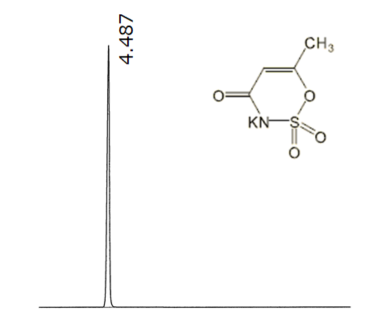
-
HPLC Conditions
Sample Acesulfame K Standard Column Wakosil-Ⅱ5C18HG, 4.6 mmφ × 250 mm Eluent 0.01% Tetrabutylammonium hydrogensulfate/CH3CN = 60/40 Flow rate 1.0 mL/min. at 40℃ Detection UV 227 nm Injection vol. 0.5 mg/mL soln. 10 μL
Aspartame
It is about 200 times as sweet as sugar and is used in foods such as diet sweeteners, soda, yogurt, and ice candies.
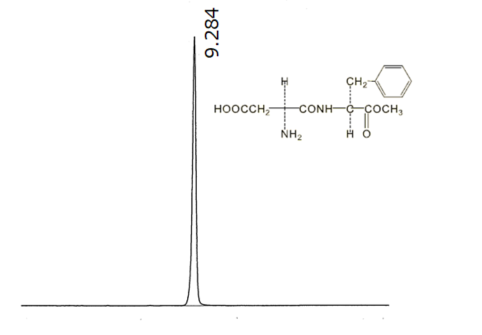
-
HPLC Conditions
Sample Aspartame Standard Column Wakosil-Ⅱ 5C18HG, 4.6 mmφ × 250 mm Eluent 10 mmol/L Phosphate Baffer(pH4.0)/CH3CN = 85/15 Flow rate 1.0 mL/min. at 40℃ Detection UV 210 nm Injection vol. 0.2 mg/mL soln. 10 μL
Advantame
It is a dipeptide methyl-ester derivative synthesized by reducing the alkylation of aspartame, a sweetener, with 3-hydroxy-4 methoxy-phenylpropionaldehyde. Although sweetness depends on the type of food in which it is used and blending composition, its sweetness is approximately 14000-48000 times that of sugar and 90-120 times that of aspartame.

-
HPLC Conditions
Sample Advantame Standard Column Wakosil-Ⅱ 5C18HG, 4.6 mmφ × 250 mm Eluent A:phosphate Buffer(pH 2.8) 900 mL+CH3CN 100 mL
B:phosphate Buffer(pH 2.8) 400 mL+CH3CN 600 mL
0-30 min. B:15%, 30-55 min. B:15-25%
55-75 min. B:25-100%, 75-90 min. B:100%Flow rate 1.0 mL/min. at 50℃ Detection UV 210 nm Injection vol. 1 mg/mL soln. 20 μL
Advantamame Acid
It is a hydrolysate of advantame and is considered a major metabolite.
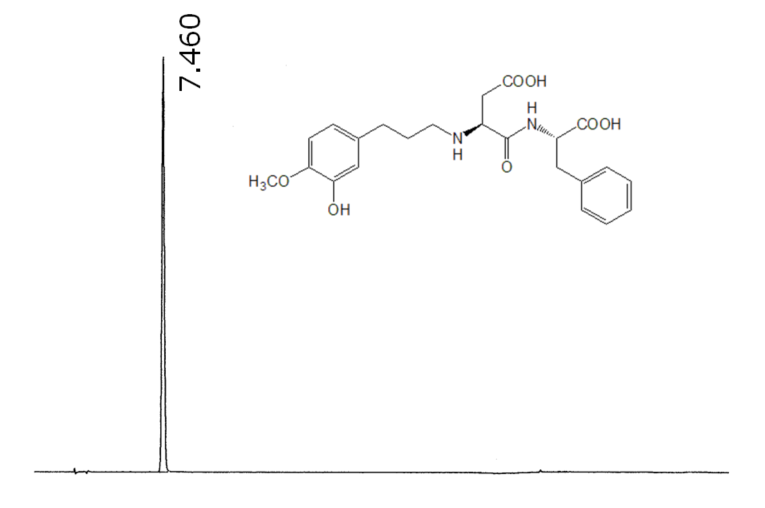
-
HPLC Conditions
Sample Advantame Acid Standard Column Wakosil-Ⅱ 5C18HG, 4.6 mmφ × 250 mm Eluent A:phosphate Buffer(pH 2.8) 900 mL+CH3CN 100 mL
B:phosphate Buffer(pH 2.8) 400 mL+CH3CN 600 mL
0-30 min. B:15%, 30-55 min. B:15-25%
55-75 min. B:25-100%, 75-90 min. B:100%Flow rate 1.0 mL/min. at 40℃ Detection UV 280 nm Injection vol. 0.2 mg/mL soln. 10 μL
Dulcin
This artificial sweetener was developed in Germany in 1883. With a sweetness of about 200 - 400 times that of sucrose, it was widely distributed in Japan after the war. However, addition of the sweetener to foods was completely prohibited in January 1969 in Japan, following intoxication accidents and detection of toxicity causing hepatic dysfunction and carcinogenicity.
Currently, dulcin is not used globally. However, dulcin was detected from foods imported; therefore, inspections are performed at quarantine stations.
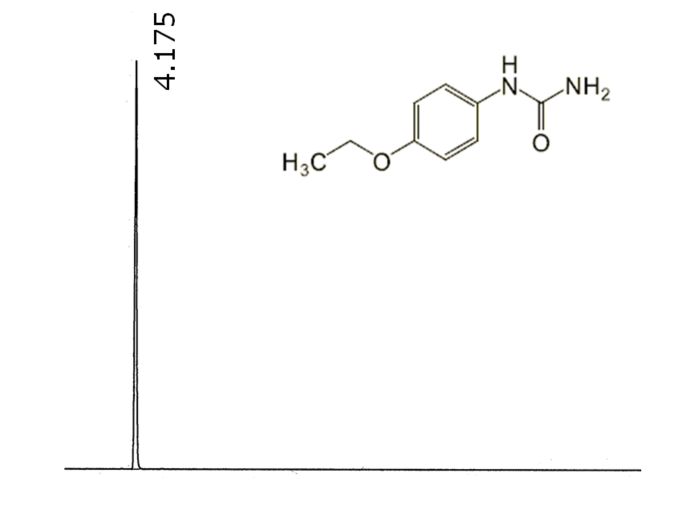
-
HPLC Conditions
Sample Dulcin Standard Column Wakopak® Navi C18-5, 4.6 mmφ × 250 mm Eluent H2O/CH3OH = 40/60 Flow rate 1.0 mL/min. at 35℃ Detection UV 240 nm Injection vol. 0.1 mg/mL CH3OH 10 μL
Saccharin Sodium Dihydrate
This artificial sweetener is about 500 times as sweet as sugar in aqueous solution. Sweeteners that are currently allowed in drinks and foods include saccharin sodium dihydrate and aspartame, which was approved in August 1983 in Japan. Saccharin sodium dihydrate can also inhibit cholinesterase activity.
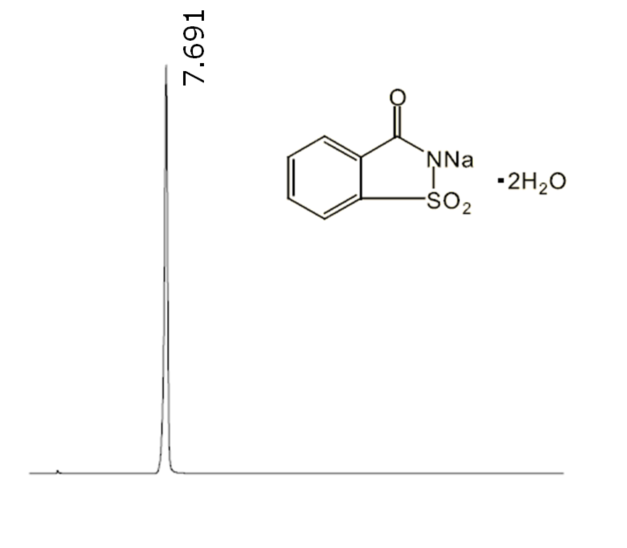
-
HPLC Conditions
Sample Saccharin Sodium Dihydrate Standard Column Wakosil-Ⅱ 5C18HG, 4.6 mmφ × 150 mm Eluent 1 vol% H3PO4/CH3CN = 90/10 Flow rate 1.0 mL/min. at 40℃ Detection UV 210 nm Injection vol. 0.1 mg/mL soln. 10 μL
Sucralose
Sucralose, developed in 1976, is approximately 600 times sweeter than sugar and is used as a raw material in foods and beverages.
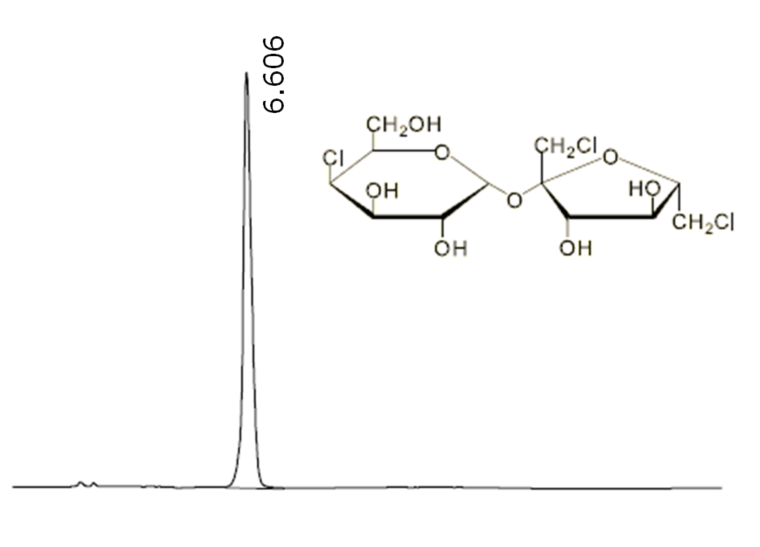
-
HPLC Conditions
Sample Sucralose Standard Column Wakosil-Ⅱ 5C18HG, 4.6 mmφ × 150 mm Eluent H2O/CH3OH = 75/25 Flow rate 1.0 mL/min. at 40℃ Detection RI Injection vol. 5 mg/mL soln. 10 μL
Cyclamic Acid Sodium Salt
This synthetic sweetener was permitted in the past, but in November 1969, the use of this synthetic sweetener was prohibited in Japan. However, the use of sodium cyclamate is approved in the EU, China, Taiwan, etc. and it is frequently detected at quarantine stations.

-
HPLC Conditions
Sample Cyclamic Acid Sodium Salt Standard Column Wakosil-Ⅱ 5C18HG, 4.6 mmφ × 150 mm Eluent H2O/CH3CN = 30/70 Flow rate 1.0 mL/min. at 40℃ Detection UV 314 nm *Measured after conversion to N,N-Dichlorocyclohexylamine
Analysis Examples (TLC)
Analysis of artificial sweeteners using the Ninhydrin-ethanol TS Spray
Target compound
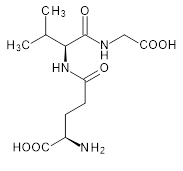 |
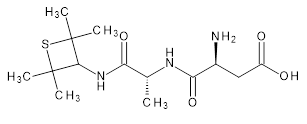 |
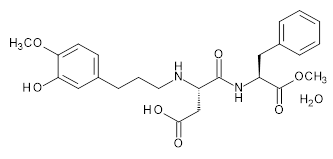 |
| 1. Glutamyl–valyl–glycine | 2. Alitame | 3. Advantame |
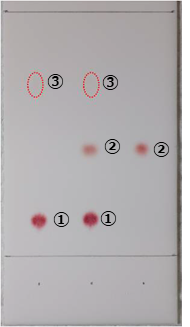
-
Analysis conditions
Deployed solvent Chloroform/Methanol/Acetic acid/Water = 30/20/4/6 Concentration of mixed solution 1. 10 μg/μL, 2. 2.5 μg/μL, 3. 2.5 μg/μL Development distance 7 cm (saturation development) Injection volume 4 μL TLC plate Silicagel 70 TLC Plate-Wako
Product List
- Open All
- Close All
Standards
Analytical column
For research use or further manufacturing use only. Not for use in diagnostic procedures.
Product content may differ from the actual image due to minor specification changes etc.
If the revision of product standards and packaging standards has been made, there is a case where the actual product specifications and images are different.



